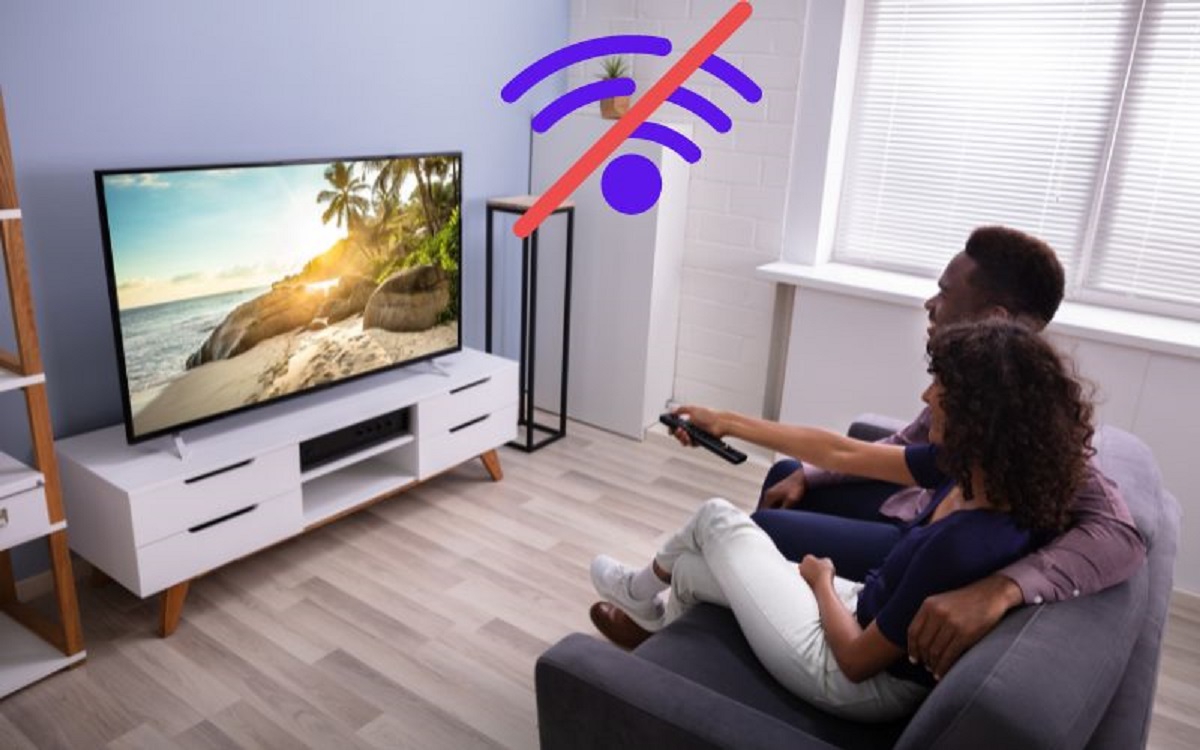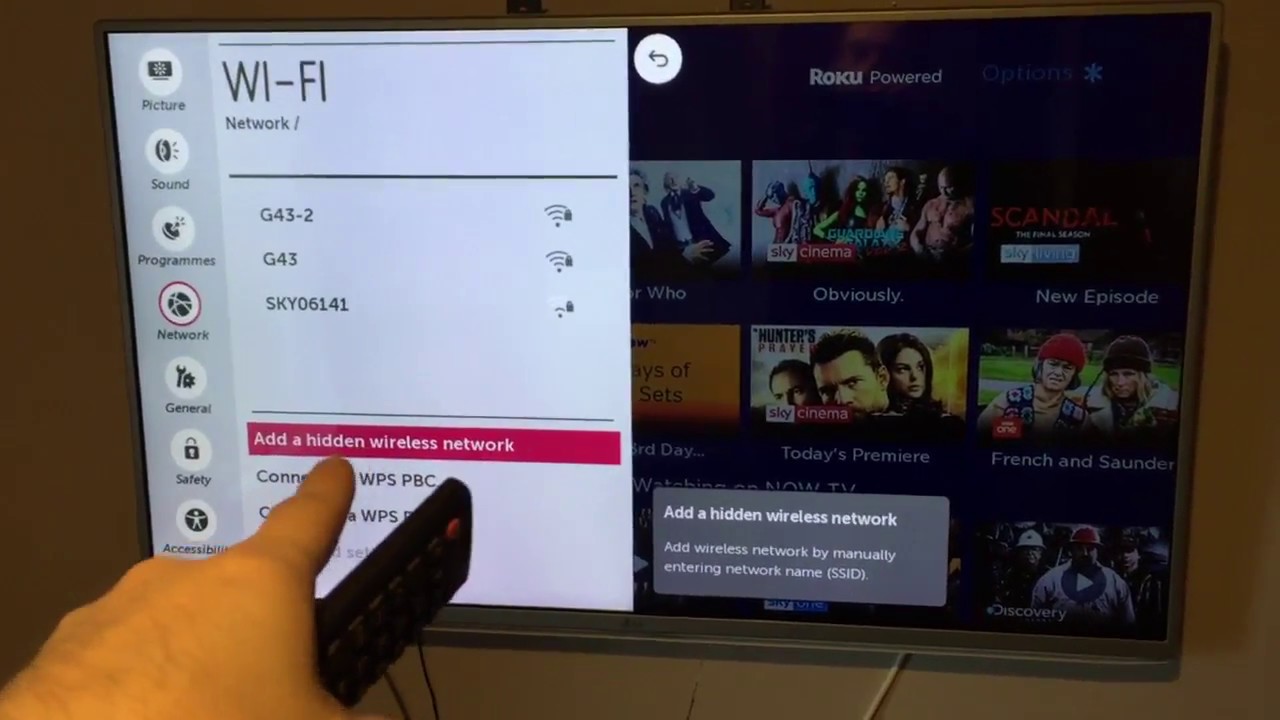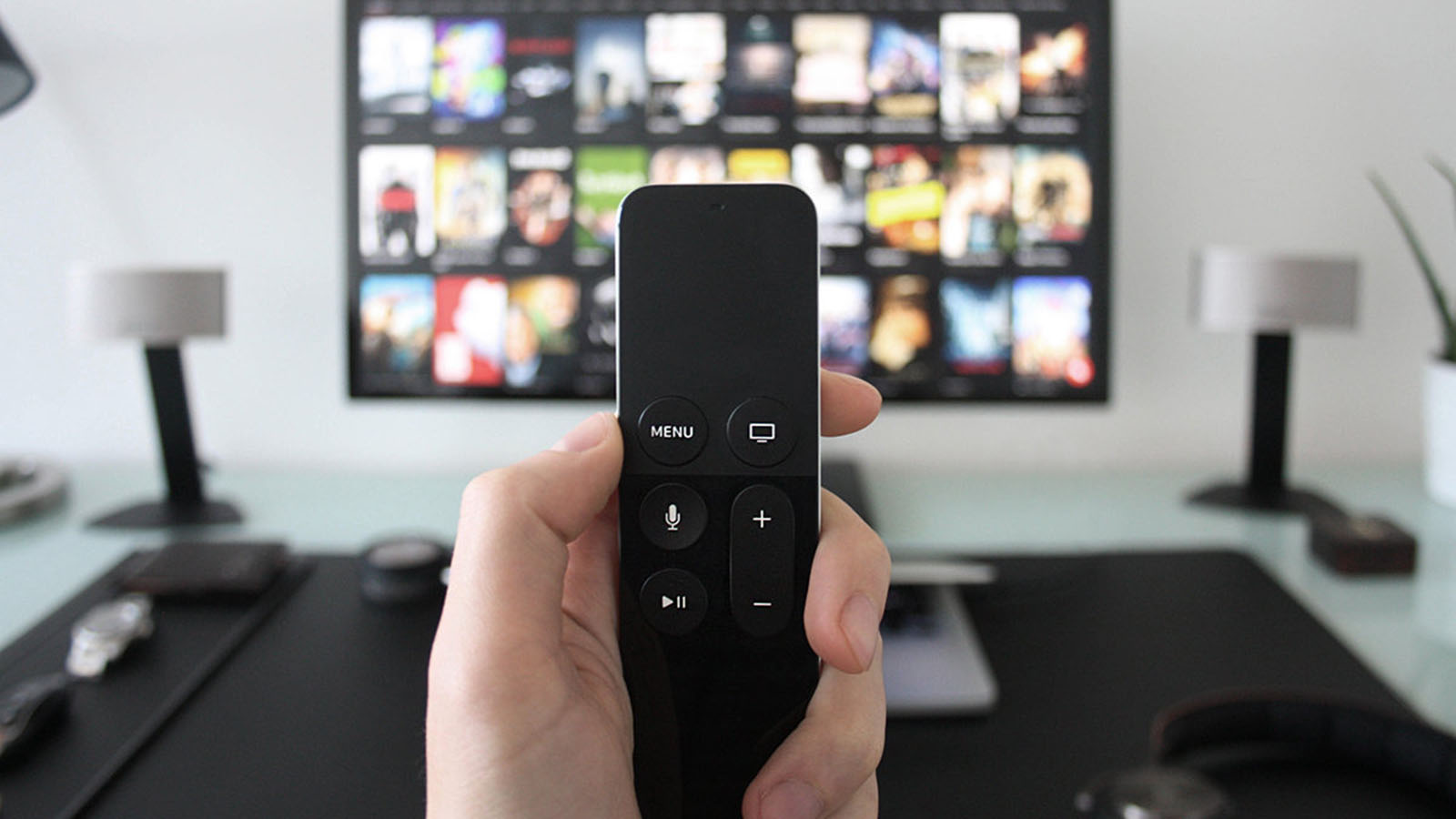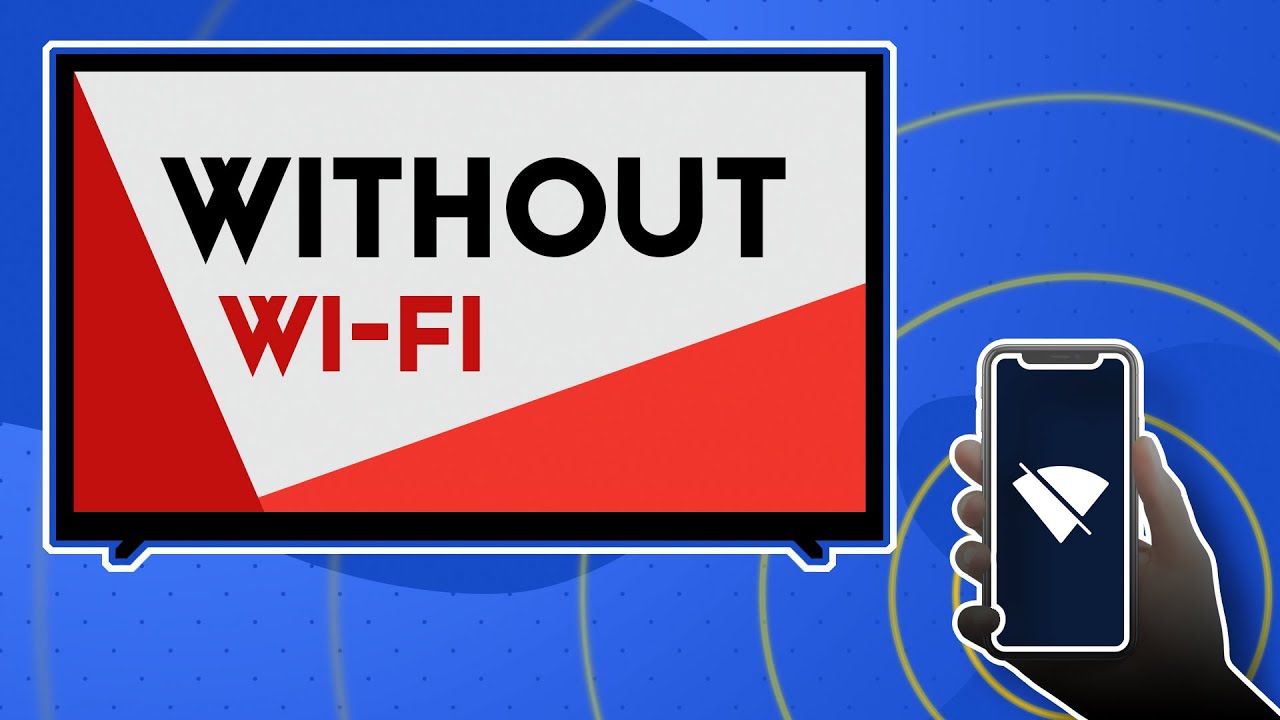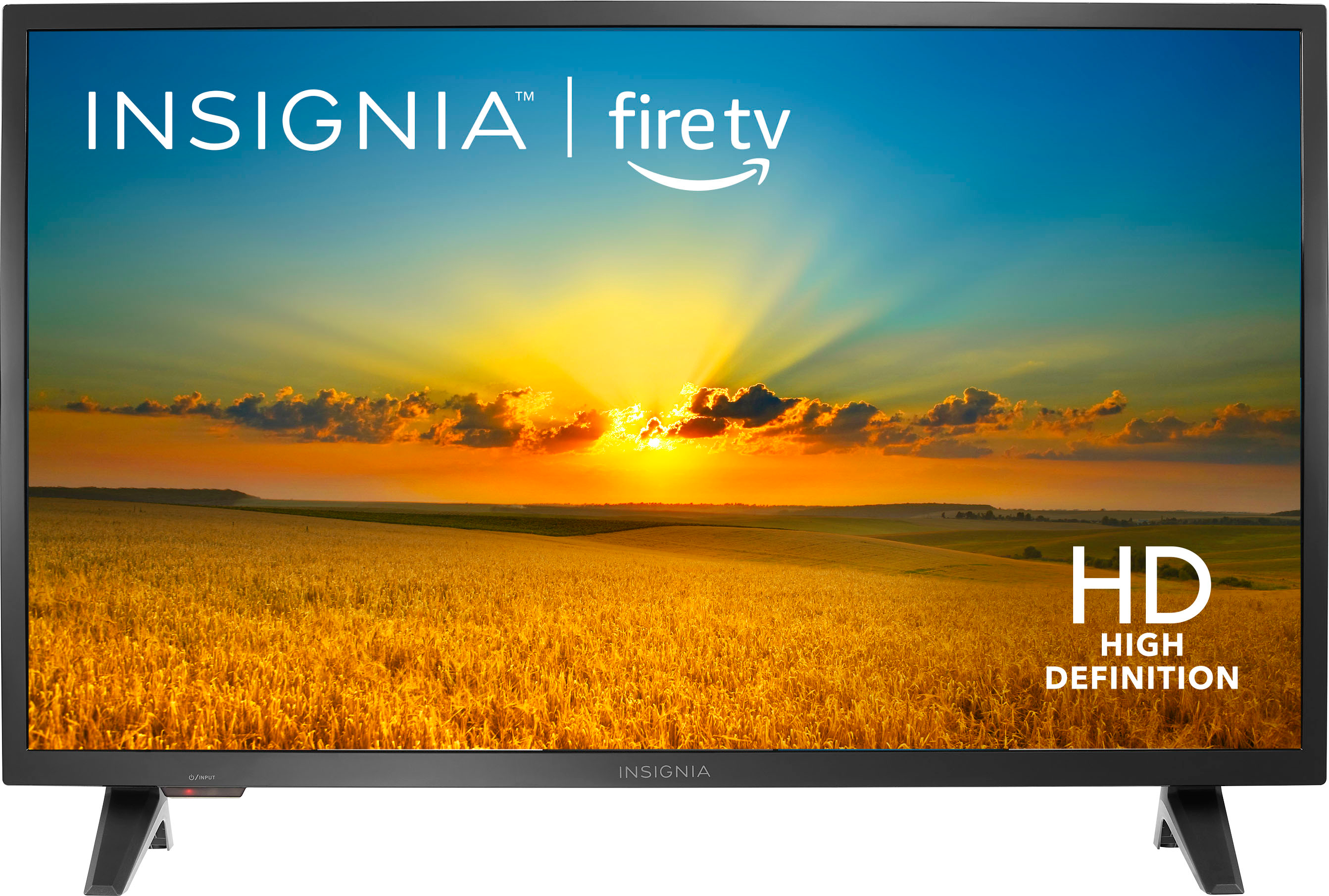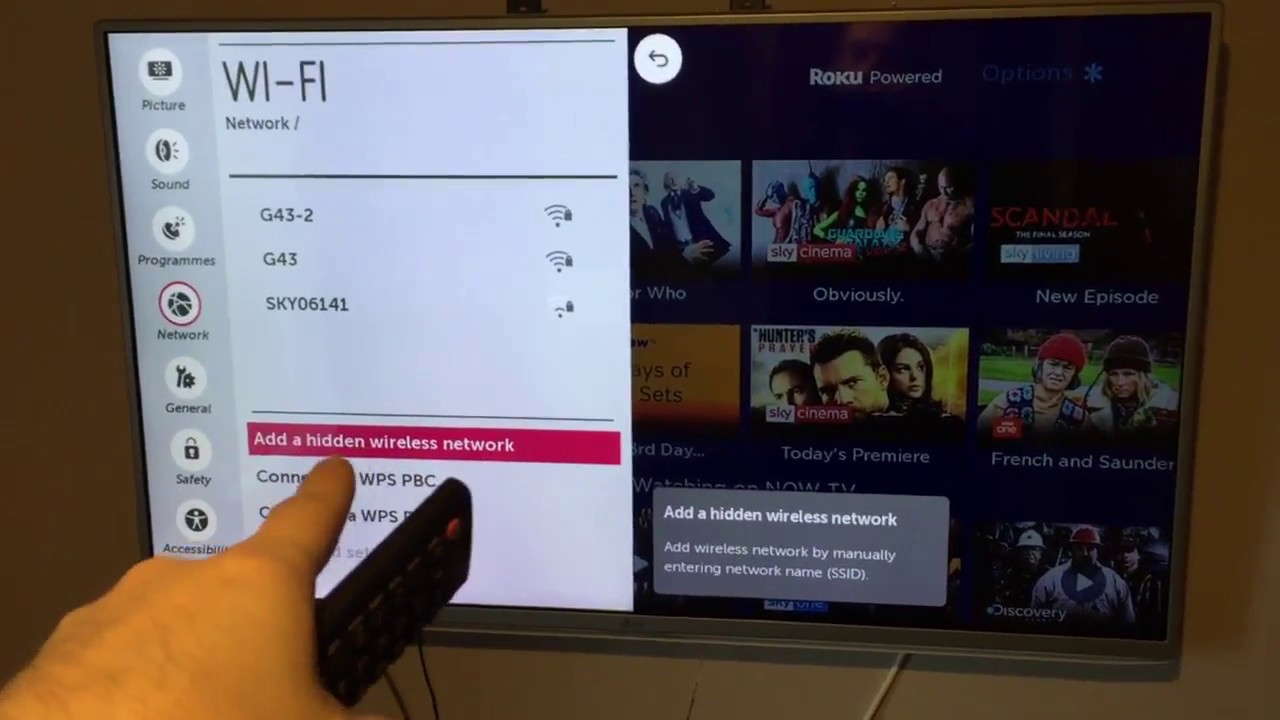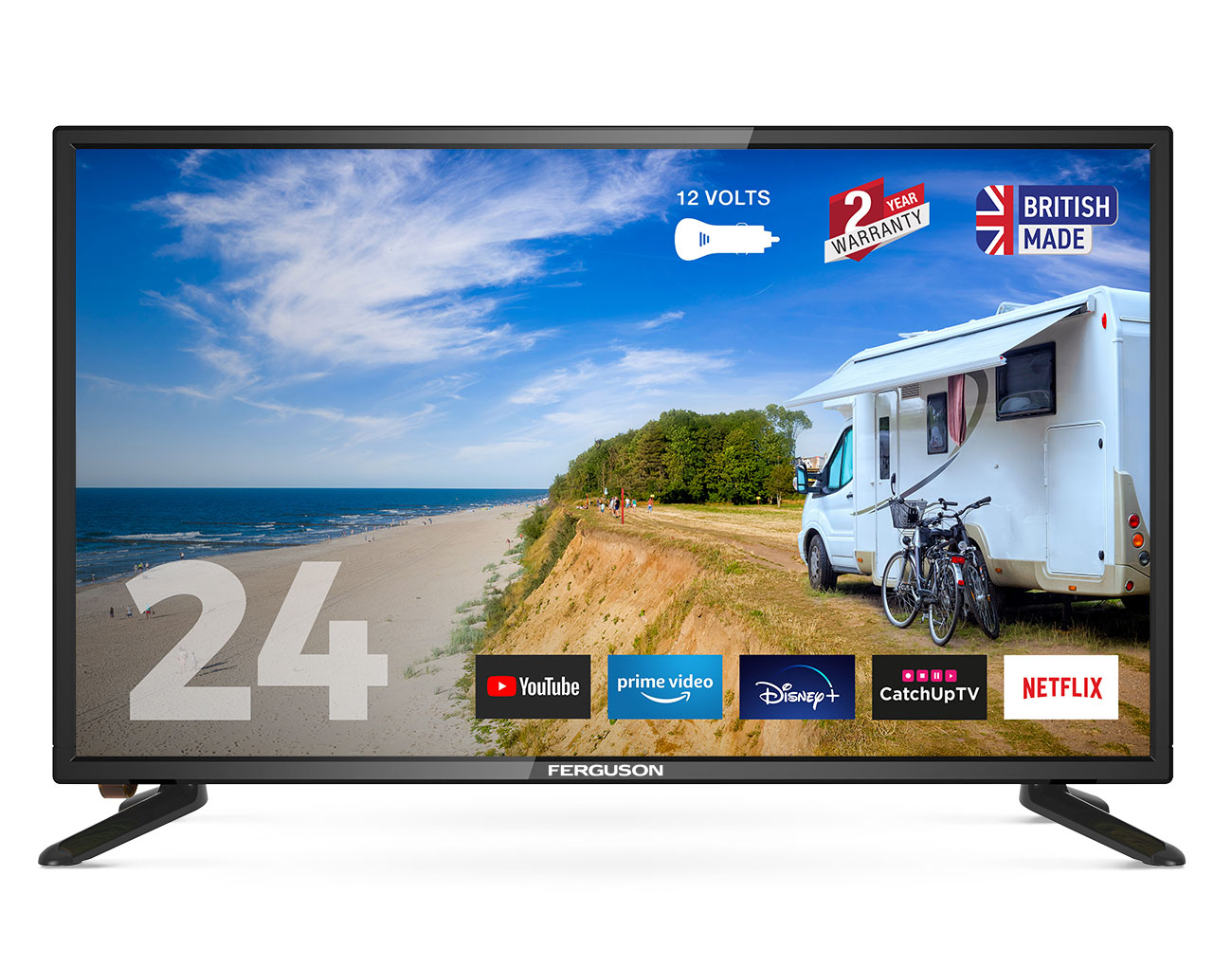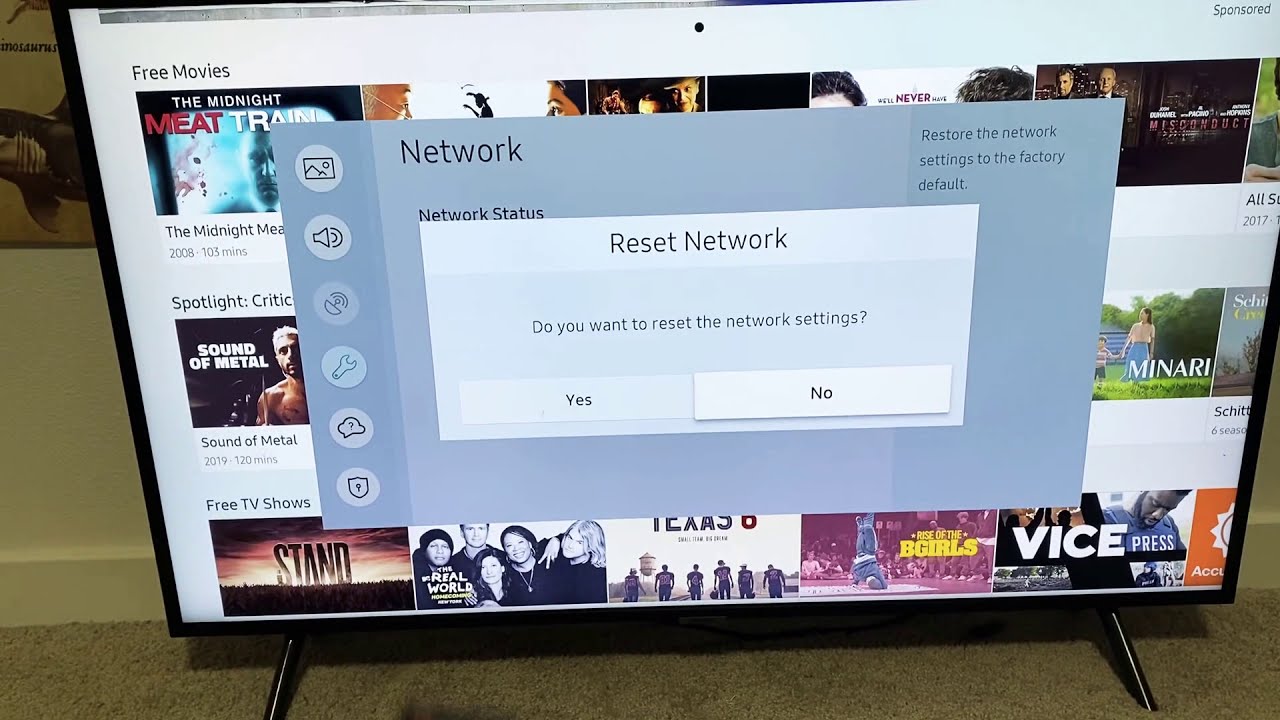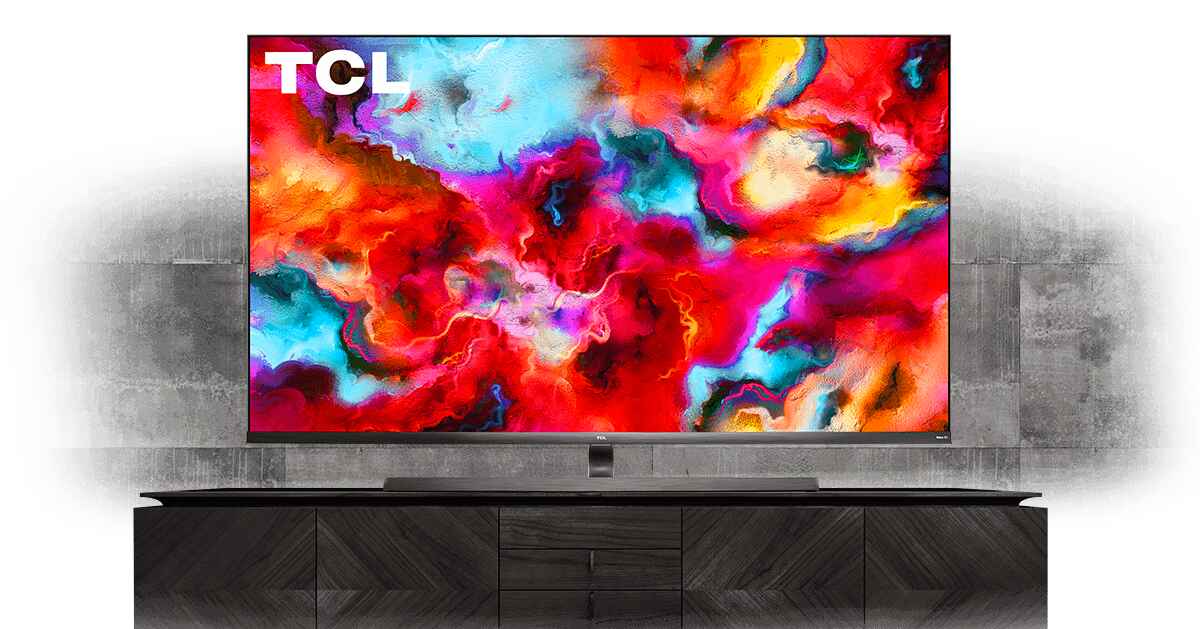Introduction
As technology continues to advance, more and more devices are becoming interconnected, making our lives more convenient and connected. One such device is the Smart TV, which allows users to stream their favorite shows, movies, and videos directly on a large screen from various online platforms. However, what happens when you don’t have access to Wi-Fi? Can you still connect to your Smart TV and enjoy your favorite media?
The answer is yes! There are several methods you can use to connect to your Smart TV even without Wi-Fi. In this article, we will explore different ways to connect to a Smart TV without relying on a traditional Wi-Fi network.
Whether you’re in a location without Wi-Fi, your Wi-Fi network is not working, or you simply don’t have a Wi-Fi router, these methods will come to your rescue. You can continue to enjoy your favorite shows and movies without the need for a stable internet connection.
So, let’s dive into these methods and explore how you can connect to your Smart TV without Wi-Fi!
Using an HDMI cable
If you have access to an HDMI cable, connecting your Smart TV to another device such as a laptop or game console becomes a breeze. HDMI stands for High Definition Multimedia Interface, and it transmits audio and video signals over a single cable. Here’s how to connect your Smart TV without Wi-Fi using an HDMI cable:
- Check for HDMI ports: First, check if both your Smart TV and the device you want to connect have HDMI ports. Most modern TVs and devices come equipped with HDMI ports.
- Connect one end of the HDMI cable: Once you’ve identified the HDMI ports, plug one end of the HDMI cable into the HDMI port on your Smart TV.
- Connect the other end of the HDMI cable: Next, connect the other end of the HDMI cable to the HDMI port on your device (e.g., laptop or game console).
- Select the correct HDMI input: On your Smart TV, use the remote control to select the correct HDMI input. This is usually labeled as “HDMI 1,” “HDMI 2,” etc. The input used depends on the HDMI port to which you connected your device.
- Start streaming: Once the HDMI connection is established, you can start streaming your favorite content from your device to your Smart TV. Your TV will display the audio and video from your device on the big screen.
Using an HDMI cable is one of the simplest and most reliable ways to connect your Smart TV without Wi-Fi. It allows you to enjoy a wide range of content directly from your device on a larger screen, providing a more immersive viewing experience.
Note that while an HDMI cable does not require Wi-Fi for the initial connection, some streaming services or apps on your device may still require an internet connection to access and stream content. However, any locally stored media, such as movies or videos saved on your device, can be played directly on your Smart TV through the HDMI connection without the need for Wi-Fi.
Using a mobile hotspot
If you have a smartphone with a mobile data plan, you can utilize the mobile hotspot feature to connect your Smart TV to the internet without Wi-Fi. A mobile hotspot allows you to share your phone’s internet connection with other devices. Here’s how you can connect your Smart TV using a mobile hotspot:
- Enable mobile hotspot: On your smartphone, go to the settings and look for the “Mobile Hotspot” option. Enable it, and you can set a name and password for the hotspot network.
- Connect your Smart TV to the hotspot: On your Smart TV, go to the network settings and search for available Wi-Fi networks. You should see your mobile hotspot network listed. Select it and enter the password you set earlier.
- Establish the connection: Once you have entered the correct password, your Smart TV will connect to the mobile hotspot network. It will now be able to access the internet through your smartphone’s data connection.
- Enjoy streaming: Now that your Smart TV is connected to the internet via the mobile hotspot, you can enjoy streaming your favorite shows, movies, and videos. Keep in mind that using mobile data for streaming may consume a significant amount of data, so be mindful of your data plan limitations.
Using a mobile hotspot provides the flexibility to connect your Smart TV to the internet wherever you have a cellular signal. It is a practical solution when you are in a location with no Wi-Fi access or when your Wi-Fi network is experiencing issues. However, it’s essential to keep an eye on your data usage to avoid exceeding your monthly allocation and incurring additional charges.
Remember that using a mobile hotspot for streaming may not always provide the same speed and stability as a dedicated home Wi-Fi network. Factors such as signal strength and network congestion can affect the streaming experience. Nonetheless, it can serve as a temporary and convenient option for connecting your Smart TV without Wi-Fi.
Using an Ethernet cable
If you have a wired internet connection available, you can connect your Smart TV to the internet without relying on Wi-Fi by using an Ethernet cable. Ethernet is a standard networking technology that provides a reliable and stable wired connection. Here’s how you can connect your Smart TV using an Ethernet cable:
- Check for Ethernet port: Ensure that your Smart TV has an Ethernet port. Most modern Smart TVs come equipped with an Ethernet port at the back or side of the TV.
- Connect the Ethernet cable: Take one end of the Ethernet cable and insert it into the Ethernet port on the Smart TV. Connect the other end of the cable to the Ethernet port on your router or modem.
- Configure the network settings: On your Smart TV, go to the network settings and select the option to connect via a wired connection or Ethernet. Your TV will detect the Ethernet connection and configure the necessary settings automatically.
- Test the connection: Once the connection is established, you can test it by accessing the internet on your Smart TV. Open a web browser or launch streaming apps to ensure that you have a stable internet connection.
- Start streaming: Now that your Smart TV is connected to the internet via Ethernet, you can start streaming your favorite content without the need for a Wi-Fi network. Enjoy a seamless streaming experience with a fast and reliable wired connection.
Using an Ethernet cable provides a more stable and consistent internet connection compared to Wi-Fi. It eliminates the potential signal interference or congestion that can often occur with wireless networks, ensuring a smooth streaming experience on your Smart TV.
It’s worth noting that using an Ethernet cable requires your Smart TV to be in close proximity to your router or modem. Additionally, you may need to purchase an Ethernet cable if one is not included with your Smart TV. However, the investment in a reliable wired connection can be well worth it, especially for those who prioritize a fast and stable internet connection for their streaming needs.
Screen mirroring with a smartphone or tablet
If you have a smartphone or tablet that supports screen mirroring, you can connect your Smart TV without Wi-Fi by wirelessly mirroring the device’s screen. Screen mirroring allows you to display the contents of your mobile device on the larger screen of your Smart TV. Here’s how you can do it:
- Check device compatibility: Verify that your smartphone or tablet supports screen mirroring. Most Android devices have a feature called “Smart View” or “Screen Mirroring,” while iOS devices have “AirPlay” for mirroring.
- Enable screen mirroring: On your Smart TV, ensure that the screen mirroring feature is enabled. Refer to your TV’s user manual or settings menu to find and enable screen mirroring.
- Activate screen mirroring on your device: On your smartphone or tablet, open the settings and look for the screen mirroring option. Activate it, and your device will start scanning for available devices to connect.
- Select your Smart TV: Once your device finds your Smart TV, select it from the list of available devices. You may be prompted to enter a PIN or verify the connection on both devices for security.
- Begin screen mirroring: After successfully connecting, your device’s screen will be mirrored on your Smart TV. You can navigate your device as usual, and the actions will be replicated on the TV screen.
Screen mirroring provides a convenient way to share photos, videos, presentations, or even play mobile games on a larger screen. It allows you to enjoy the content from your smartphone or tablet on the big screen without the need for Wi-Fi.
However, keep in mind that screen mirroring will consume the battery of your mobile device, and the quality of the wireless connection may impact the streaming experience. It’s advisable to have your device charged and ensure a stable wireless connection for optimal performance.
Screen mirroring is an excellent option if you want to watch your favorite movies, videos, or even video chat applications on a bigger screen without the need for a Wi-Fi connection. Explore the screen mirroring capabilities of your device to enjoy a more immersive viewing experience on your Smart TV.
Using a streaming device like Chromecast or Roku
If you don’t have access to Wi-Fi, but you still want to enjoy streaming content on your Smart TV, using a streaming device like Chromecast or Roku can be a viable solution. These devices connect to your TV and provide access to various streaming platforms without the need for Wi-Fi on the TV itself. Here’s how you can use these streaming devices:
- Connect the streaming device: Plug the streaming device (Chromecast, Roku, etc.) into the HDMI port of your Smart TV. Make sure to follow the manufacturer’s instructions for proper installation.
- Connect the device to the internet: Most streaming devices require an internet connection. To connect them, follow the on-screen instructions provided by the device. This usually involves connecting the streaming device to your home Wi-Fi network using the device remote or companion app.
- Select and install streaming apps: Once your streaming device is connected to the internet, you can browse the available streaming apps and services. Select the apps you want to use and install them on your streaming device.
- Use your smartphone or tablet as a remote: Some streaming devices allow you to control them using your smartphone or tablet. Download the companion app for your streaming device and follow the instructions to set it up. This can make navigating the streaming apps and content much more convenient.
- Start streaming: Once you have installed your preferred streaming apps on the device and connected to the internet, you can start streaming content on your Smart TV. Use the streaming device’s interface to browse through the available shows, movies, and other media.
Streaming devices like Chromecast and Roku provide a convenient way to access streaming content on your Smart TV without relying on Wi-Fi. They have their own dedicated internet connection, allowing you to enjoy a wide range of entertainment options.
While these devices require an initial Wi-Fi connection for setup and app installation, you don’t need to connect your TV to Wi-Fi. Instead, you use the streaming device as an intermediary to access and stream content on your Smart TV.
With a streaming device, you can enjoy all the benefits of streaming services and apps on your Smart TV, even without Wi-Fi access. It opens up a world of entertainment possibilities, giving you access to your favorite shows and movies without being limited by a Wi-Fi connection.
Connecting via Bluetooth
Bluetooth technology provides another option for connecting your Smart TV without Wi-Fi and enjoying audio content wirelessly. While Bluetooth is commonly used to connect speakers or headphones to a TV, some Smart TVs also have the capability to connect to other Bluetooth-enabled devices. Here’s how you can connect your Smart TV via Bluetooth:
- Check for Bluetooth capability: Ensure that your Smart TV has built-in Bluetooth functionality. Refer to your TV’s user manual or settings menu to confirm if Bluetooth is available.
- Enable Bluetooth on the TV: If your Smart TV has Bluetooth capability, access the settings menu and enable Bluetooth. Follow the instructions provided by your TV to set it up for pairing with other devices.
- Enable Bluetooth on your device: Activate Bluetooth on the device you want to connect to your Smart TV. This could be a Bluetooth-enabled smartphone, tablet, or even a Bluetooth transmitter connected to another audio device.
- Pair the devices: On your Smart TV, search for available Bluetooth devices and initiate the pairing process. On your device, ensure that it is discoverable and waiting to connect. The TV and device should detect each other and prompt for confirmation to pair.
- Establish the connection: Once the pairing is successful, the devices will connect via Bluetooth. You can now stream audio from your device to your Smart TV wirelessly.
Connecting your Smart TV via Bluetooth allows you to enjoy audio content wirelessly without the need for Wi-Fi. This is particularly useful if you want to watch movies or TV shows with wireless headphones or speakers. It provides flexibility and convenience, allowing you to enjoy a personalized audio experience.
Keep in mind that Bluetooth connectivity range varies depending on the devices involved. Ensure that your device remains within a reasonable distance from the Smart TV to maintain a strong and stable Bluetooth connection.
While Bluetooth audio connections do not require Wi-Fi for streaming, it’s important to note that other forms of media, such as video streaming apps, still require a Wi-Fi connection to access and stream content. However, for those looking to enhance their audio experience or enjoy personal viewing without disturbing others, connecting via Bluetooth offers a wire-free option to enhance entertainment on your Smart TV.
Using a VPN router
Using a VPN (Virtual Private Network) router is a solution for connecting your Smart TV without Wi-Fi while also enhancing online privacy and security. A VPN router allows you to create a secure internet connection and bypass any restrictions imposed by your internet service provider. Here’s how you can connect your Smart TV using a VPN router:
- Purchase a VPN router: Look for a VPN router that is compatible with your Smart TV and supports the VPN service you want to use. There are various options available in the market, so choose one that meets your requirements.
- Set up the VPN router: Follow the manufacturer’s instructions to set up the VPN router. This typically involves connecting the router to your ISP’s modem or router and configuring the VPN settings using the provided software or web interface.
- Connect your Smart TV to the VPN router: On your Smart TV, go to the network settings and connect to the Wi-Fi network provided by the VPN router. Input any necessary login credentials or password.
- Establish the VPN connection: Once your Smart TV is connected to the VPN router, the internet connection will be secured and routed through the VPN. You can access geo-restricted content, browse the web privately, and enjoy enhanced privacy and security.
- Start streaming: With the VPN connection established, you can now start streaming your favorite shows and movies on your Smart TV. The VPN router ensures your online activities are encrypted and protected, allowing you to enjoy unrestricted access to content.
Using a VPN router provides an added layer of security and privacy, especially when connecting your Smart TV to the internet without Wi-Fi. It encrypts your internet traffic, making it more challenging for third parties to monitor your online activities and potentially helps bypass region-based content restrictions.
Keep in mind that using a VPN may have an impact on your internet speed due to the additional encryption and routing processes. It’s advisable to choose a VPN provider renowned for providing fast and reliable connections to ensure a smooth streaming experience on your Smart TV.
Using a VPN router not only allows you to connect your Smart TV without relying on Wi-Fi but also offers the benefits of enhanced privacy, security, and access to geo-restricted content. It is a comprehensive solution for those seeking a secure and unrestricted streaming experience on their Smart TV.
Conclusion
In today’s digital age, connectivity is key, and even without access to a Wi-Fi network, you can still connect and enjoy your Smart TV. In this article, we’ve explored various methods to connect to your Smart TV without Wi-Fi.
Using an HDMI cable allows you to directly connect your Smart TV to a compatible device like a laptop or game console, providing a reliable and high-quality streaming experience. If you have a smartphone with a mobile hotspot feature, you can utilize it to share your mobile data connection with the Smart TV.
In cases where a wired connection is available, using an Ethernet cable is an excellent option. It ensures a stable and fast internet connection, allowing you to stream content without relying on Wi-Fi.
Screen mirroring with a smartphone or tablet lets you share your mobile device’s screen on your Smart TV, providing a convenient way to enjoy media and presentations on a larger display.
Investing in a streaming device like Chromecast or Roku enables you to access various streaming platforms directly on your Smart TV, bypassing the need for a Wi-Fi connection on the TV itself.
If you prioritize audio streaming, connecting via Bluetooth allows you to wirelessly transmit audio from your device to your Smart TV, enhancing your audio experience without relying on Wi-Fi.
For those concerned about online privacy and security, using a VPN router not only connects your Smart TV without Wi-Fi but also encrypts your internet traffic, providing an added layer of protection.
In conclusion, there are numerous alternatives to connect to your Smart TV without relying on a Wi-Fi network. Consider the available options and choose the method that best suits your needs and preferences. Whether it’s through wires, mobile data, screen mirroring, streaming devices, or VPN routers, you can continue to enjoy your favorite content on your Smart TV, regardless of the availability of a Wi-Fi network.







